Table of Contents
Introduction: Unlocking the Universe Through Millisecond Pulsars
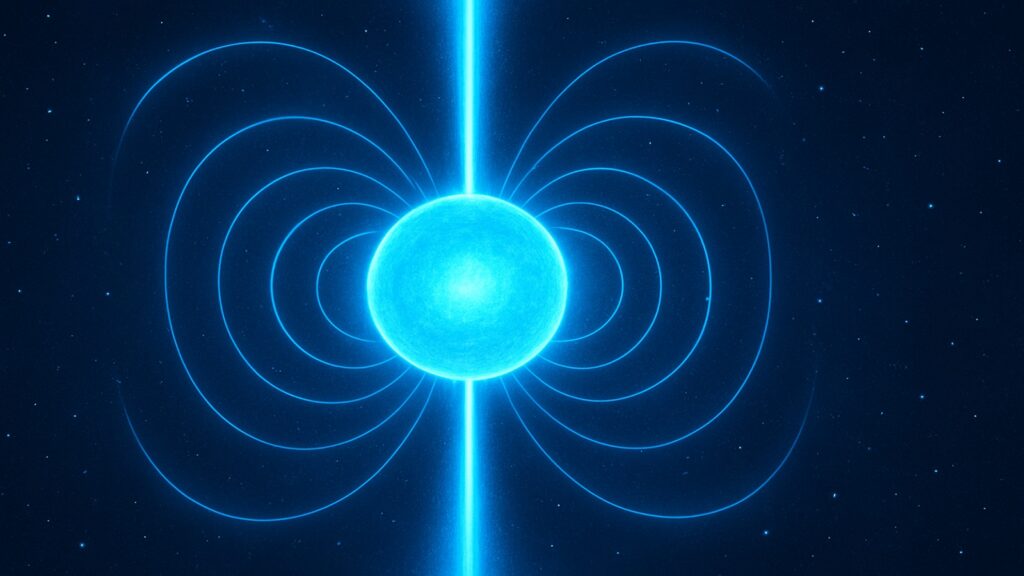
In the vast darkness of space, certain stars spin with clockwork precision that would make Swiss watchmakers envious. These cosmic lighthouses, known as millisecond pulsars, rotate hundreds of times per second while beaming radiation across the universe with timing so accurate they rival the most sophisticated atomic clocks ever constructed. Their existence challenges our understanding of what matter can endure under the most extreme conditions imaginable.
Millisecond pulsars represent some of the most extraordinary objects in our galaxy. Born from the violent collapse of massive stars into neutron stars barely twenty kilometers wide yet containing more mass than our Sun, these stellar remnants have been accelerated to incredible rotational speeds through billions of years of stellar cannibalism. When a neutron star systematically strips matter from a companion star in a binary system, it gradually gains angular momentum and transforms into a millisecond pulsar through a process astronomers call recycling.
The remarkable story of their discovery began in 1982 when Don Backer and his collaborative team at Arecibo Observatory detected PSR B1937+21, the first confirmed millisecond pulsar. This groundbreaking discovery immediately revolutionized our understanding of neutron star physics and opened entirely new avenues of astronomical research that continue to yield surprises decades later. Since that pivotal moment, over 400 millisecond pulsars have been systematically catalogued across our galaxy, each serving as a natural laboratory for testing fundamental physics and exploring the deepest mysteries of the cosmos.
These stellar timekeepers matter profoundly because they push the boundaries of what we thought possible in nature while serving multiple roles in modern astrophysics. They help us conduct the most stringent tests of Einstein’s general relativity, participate in ambitious hunts for gravitational waves rippling through spacetime, and allow us to understand how matter behaves under conditions utterly impossible to recreate in terrestrial laboratories. The extraordinary precision of millisecond pulsars allows astronomers to probe the very fabric of spacetime itself, making them invaluable tools for twenty-first-century astrophysics and cosmology.
Key Properties of Millisecond Pulsars
| Property | Range | Significance |
|---|---|---|
| Rotation Period | 1.3 – 10 milliseconds | Fastest spinning objects in universe |
| Magnetic Field | 10^8 – 10^9 Gauss | 100 million times weaker than young pulsars |
| Timing Precision | Nanosecond accuracy | Rivals best atomic clocks |
| Age | Billions of years | Ancient recycled stellar corpses |
| Binary Fraction | ~80% | Most exist in binary systems |
1. Millisecond Pulsars in Globular Clusters: Ancient Cosmic Labs

Globular clusters serve as stellar nurseries where millisecond pulsars flourish in remarkable numbers that exceed all theoretical expectations. These ancient collections of stars, some containing populations over 12 billion years old, create the perfect environmental conditions for pulsar formation through their incredible stellar density and complex gravitational dynamics. Within these cosmic cities, stars pack together thousands of times more densely than in typical galactic neighborhoods, creating interaction rates that fundamentally alter stellar evolution pathways.
The extraordinarily crowded environment of globular clusters promotes stellar encounters and exchanges that would be virtually impossible elsewhere in the galaxy. When stars venture too close to each other in these dense environments, they can exchange orbital partners, steal substantial amounts of material, or even undergo direct physical collisions that reshape their fundamental properties. These violent gravitational interactions often result in the formation of X-ray binary systems, which eventually evolve into millisecond pulsars after the neutron star component has systematically consumed enough material from its companion to spin up to extreme rotational speeds through accretion processes.
Terzan 5, one of the most pulsar-rich globular clusters known to astronomers, contains at least 39 confirmed millisecond pulsars within its relatively compact boundaries. This extraordinary concentration represents a natural astrophysical laboratory where researchers can study pulsar populations and their evolutionary pathways in ways that remain impossible in the sparse galactic field environment. The exceptionally high stellar encounter rate in these clusters means that even initially isolated neutron stars can gravitationally capture new companion stars, leading to recycling processes that breathe new life into ancient stellar remnants.
Extensive research efforts by prominent astronomers like Paulo Freire and his international collaborators have demonstrated that globular clusters may harbor up to several hundred millisecond pulsars each, though many remain undetected due to current observational limitations and technical challenges. The dense stellar environment also creates unique astrophysical phenomena, as pulsars can be accelerated to remarkably high velocities through complex gravitational slingshot effects involving multiple stellar encounters, sometimes ejecting them completely from their home clusters and sending them wandering through the galactic halo.
Millisecond Pulsars in Notable Globular Clusters
| Cluster Name | Known MSPs | Notable Features |
|---|---|---|
| Terzan 5 | 39 | Highest MSP density known |
| 47 Tucanae | 25 | First cluster with radio MSPs detected |
| NGC 6440 | 11 | Contains eclipsing binary systems |
| M28 | 12 | Mix of isolated and binary MSPs |
| NGC 6752 | 5 | Contains MSP-white dwarf systems |
2. Millisecond Pulsars as Cosmic Clocks: Precision in Space-Time
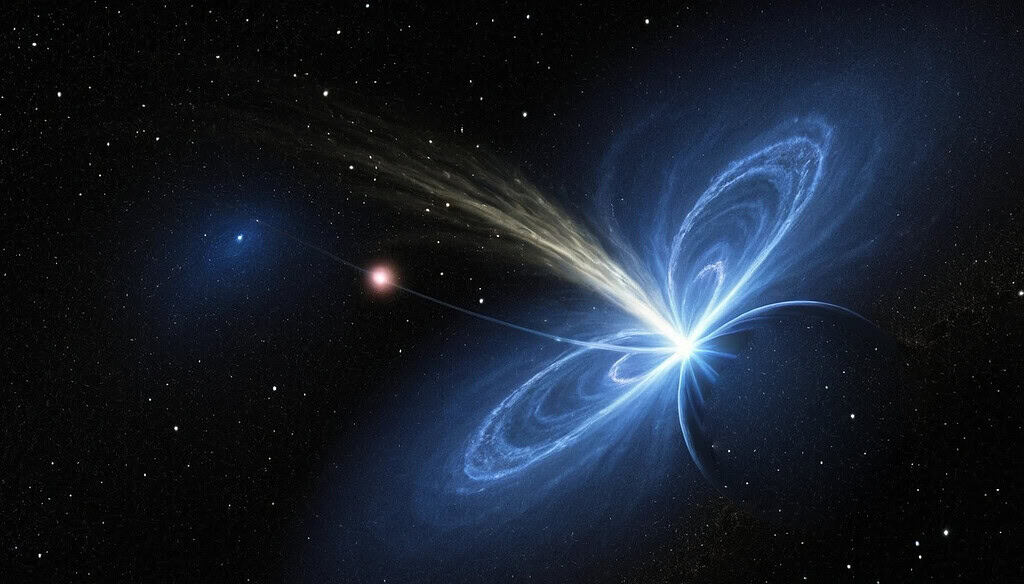
The extraordinary rotational stability of millisecond pulsars surpasses even the most sophisticated human-made timepieces by orders of magnitude. These stellar clocks are the most precise in the fabric of space-time. They maintain their spin with such remarkable regularity that their pulse arrival times can be predicted years or even decades in advance with nanosecond precision, a feat that represents one of the most stable natural phenomena known to science. This extraordinary temporal stability stems from their enormous rotational inertia combined with the fundamental conservation of angular momentum in these incredibly compact objects.
Unlike young pulsars that slow down relatively quickly due to magnetic braking effects that drain their rotational energy, millisecond pulsars possess much weaker magnetic fields and consequently lose rotational energy at truly glacial rates. Some millisecond pulsars will continue spinning at nearly constant rates for many billions of years into the future, making them among the most reliable natural chronometers in the observable universe and potentially outlasting entire galactic evolutionary cycles.
The precision timing capabilities of millisecond pulsars extend far beyond pure scientific curiosity and have practical applications that could revolutionize space exploration. Leading scientists have proposed sophisticated schemes for using arrays of millisecond pulsars for deep space navigation systems, effectively creating a galactic positioning system for future interstellar missions that would operate independently of Earth-based infrastructure. The ambitious concept involves measuring pulse arrival times from multiple strategically positioned pulsars to triangulate spacecraft positions with unprecedented accuracy across vast cosmic distances that dwarf our solar system.
Groundbreaking work by researchers like Scott Ransom at the National Radio Astronomy Observatory has demonstrated that millisecond pulsar timing can routinely achieve precision better than one part in a billion billion, allowing detection of incredibly tiny perturbations in the fabric of spacetime itself. This extraordinary level of accuracy enables investigations into fundamental physics and cosmology that would remain completely impossible with even the most advanced terrestrial instruments and laboratory facilities.
Timing Precision of Notable Millisecond Pulsars
| Pulsar Name | Period (ms) | Timing Precision | Key Applications |
|---|---|---|---|
| PSR J0437-4715 | 5.76 | ~100 nanoseconds | Navigation standards |
| PSR J1713+0747 | 4.57 | ~30 nanoseconds | Gravitational wave detection |
| PSR J1909-3744 | 2.95 | ~50 nanoseconds | General relativity tests |
| PSR J1744-1134 | 4.07 | ~200 nanoseconds | Pulsar timing arrays |
| PSR B1937+21 | 1.56 | ~300 nanoseconds | First millisecond pulsar |
3. Millisecond Pulsars and Einstein: Testing General Relativity

Binary millisecond pulsars provide the most stringent tests of Einstein’s general relativity available anywhere in the universe. When these stellar remnants orbit in tight binary systems, they create natural laboratories where spacetime becomes severely warped, allowing direct observation of relativistic effects that remain unmeasurable in weaker gravitational fields.
The Shapiro delay effect represents one of the most dramatic demonstrations of general relativity using millisecond pulsars. As pulsar signals pass through the curved spacetime near their companion stars, the light paths lengthen and signals arrive slightly delayed. By measuring these delays with microsecond precision, astronomers can map the gravitational field structure around these exotic objects and verify Einstein’s predictions with remarkable accuracy.
Orbital decay measurements from pulsar systems like PSR B1913+16 have confirmed that binary systems lose energy through gravitational wave emission exactly as general relativity predicts. The orbital period of this system decreases by precisely the amount expected if the binary is radiating gravitational waves, providing indirect evidence for these spacetime ripples decades before their direct detection.
Studies by researchers like Ingrid Stairs have used millisecond pulsar timing to measure relativistic effects, including time dilation, gravitational redshift, and frame-dragging around spinning neutron stars. These measurements probe gravity in regimes billions of times stronger than accessible through solar system experiments, pushing general relativity to its limits.
Relativistic Effects in Binary Millisecond Pulsar Systems
| Effect | Observable | Measurement Precision | Physical Insight |
|---|---|---|---|
| Shapiro Delay | Signal delay | Microseconds | Spacetime curvature |
| Orbital Decay | Period decrease | 10^-12 seconds/orbit | Gravitational wave emission |
| Periastron Advance | Orbital precession | Milliarcseconds/year | Strong-field gravity |
| Time Dilation | Pulse frequency shift | Parts per million | Gravitational time effects |
| Mass Ratio | Binary dynamics | 0.1% accuracy | Neutron star masses |
4. Millisecond Pulsars and Neutron Star Evolution: Stellar Clues
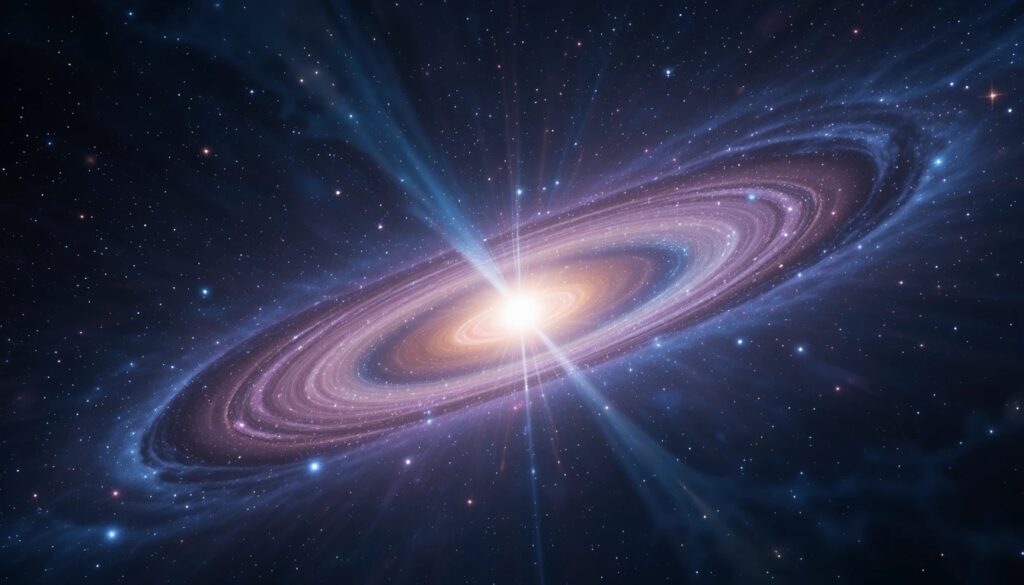
Millisecond pulsars reveal the fascinating hidden life stories of neutron stars, meticulously documenting their complex journey from violent stellar birth through multiple recycling episodes and their eventual cosmic fate. These stellar archeologists preserve detailed evidence of their evolutionary history encoded in their spin rates, magnetic field strengths, orbital characteristics, and companion star properties, effectively creating a comprehensive fossil record of neutron star development across billions of years of cosmic time.
The widely accepted recycling model provides a compelling explanation for how ancient neutron stars undergo dramatic transformation into millisecond pulsars through sustained accretion from companion stars in binary systems. Initially born as relatively slow-spinning objects with tremendously strong magnetic fields reaching trillions of gauss, young neutron stars gradually decelerate as their powerful magnetic fields extract rotational energy through magnetospheric processes. However, when a neutron star begins systematically accreting matter from a nearby binary companion, the continuously infalling material carries substantial angular momentum that progressively spins up the neutron star while simultaneously burying and dramatically weakening its original magnetic field through accretion-driven field decay.
Black widow and redback systems represent the most extreme and fascinating examples of this recycling process in action, where energetic millisecond pulsars actively destroy their low-mass companions through intense radiation pressure and high-energy particle winds. In these remarkable systems, the pulsar’s enormous energy output systematically ablates material from the companion star’s surface, creating distinctive eclipsing behavior as dense clouds of ionized gas periodically block the pulsar’s radio signals during orbital motion. These systems provide direct observational evidence of the recycling process while demonstrating the ultimate power of millisecond pulsars to reshape their immediate stellar environment.
Comprehensive population synthesis studies conducted by leading theorists like Thom Tauris and his research groups suggest that most millisecond pulsars undergo multiple complex recycling episodes throughout their extended lifetimes, frequently trading partners through gravitational encounters and continuing to accrete fresh material until their companions are either completely consumed, gravitationally disrupted, or ejected from the system entirely.
Millisecond Pulsar System Types and Evolution
| System Type | Companion Mass | Evolutionary Stage | Population Fraction |
|---|---|---|---|
| Isolated | None (disrupted) | End state | ~20% |
| White Dwarf Binary | 0.1-1.4 M☉ | Post-recycling | ~60% |
| Black Widow | <0.1 M☉ | Active ablation | ~10% |
| Redback | 0.1-0.4 M☉ | Intermediate | ~5% |
| Main Sequence Binary | >0.5 M☉ | Early recycling | ~5% |
5. Millisecond Pulsars and the Hunt for Gravitational Waves
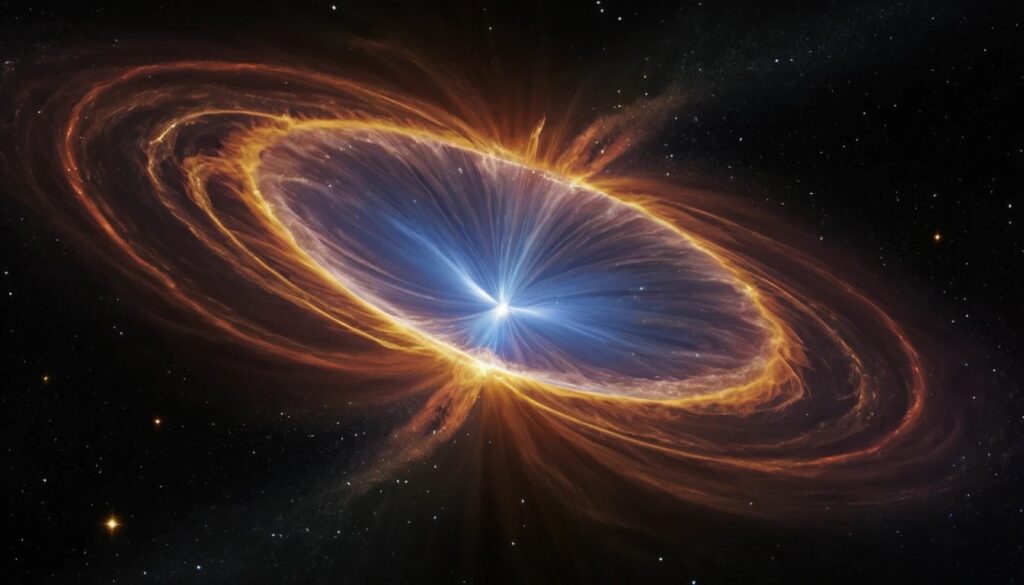
Pulsar timing arrays represent one of the most ambitious and technically challenging experiments in modern astronomy, ingeniously using millisecond pulsars scattered throughout our galaxy as a vast network of gravitational wave detectors spanning thousands of light-years. These arrays simultaneously monitor dozens of carefully selected millisecond pulsars across the sky, meticulously searching for subtle correlated timing perturbations that would provide unmistakable evidence of gravitational waves passing through our local region of spacetime.
The elegant conceptual foundation behind pulsar timing arrays relies on the fundamental physical principle that gravitational waves literally stretch and compress the fabric of space itself, subtly altering the distances between Earth and the pulsars we observe across galactic scales. When a gravitational wave propagates between our planet and a distant pulsar, it temporarily changes the light travel time by incredibly tiny amounts measured in nanoseconds, creating barely measurable delays or advances in pulse arrival times. By carefully correlating these minute timing residuals across multiple pulsars using sophisticated statistical techniques, astronomers can mathematically reconstruct the gravitational wave signals and determine their astrophysical origins.
Recent groundbreaking achievements by major international collaborations including NANOGrav, the European Pulsar Timing Array, and the Parkes Pulsar Timing Array have provided the first compelling evidence for a pervasive gravitational wave background originating from merging supermassive black hole binaries throughout cosmic history. This remarkable background signal represents the combined gravitational wave emission from thousands of black hole mergers that have occurred throughout the observable universe, creating a persistent stochastic gravitational wave environment that permeates all of spacetime.
The continuously improving sensitivity of pulsar timing arrays shows tremendous promise as more millisecond pulsars are systematically discovered and incorporated into these networks while timing precision steadily increases through technological advances. Future gravitational wave detections may reveal individual supermassive black hole merger events, exotic cosmic strings from the early universe, or even primordial gravitational waves from cosmic inflation, potentially opening entirely revolutionary new windows into the fundamental physics of cosmic evolution and the nature of spacetime itself.
Table 6: Major Pulsar Timing Array Projects
| Array Name | Number of MSPs | Observation Span | Key Achievements |
|---|---|---|---|
| NANOGrav | 45+ | 15+ years | Gravitational wave background detection |
| EPTA | 25+ | 25+ years | European precision timing |
| PPTA | 20+ | 20+ years | Southern hemisphere coverage |
| IPTA | 65+ | Combined data | International collaboration |
| CPTA | 40+ | 12+ years | Chinese array expansion |
6. Millisecond Pulsars and the Future of Astronomy
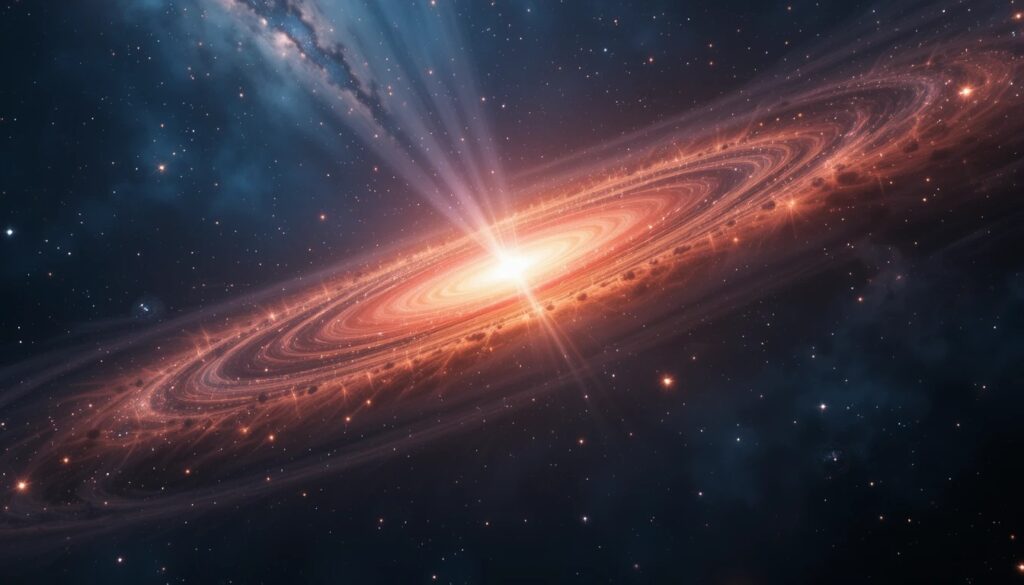
The future of millisecond pulsar research promises revolutionary discoveries as next-generation telescopes come online with unprecedented sensitivity and capabilities. The Square Kilometre Array, currently under construction, will increase pulsar discovery rates by orders of magnitude while improving timing precision to levels that will enable detection of individual gravitational wave sources.
China’s Five-hundred-meter Aperture Spherical Telescope has already begun transforming pulsar astronomy since beginning operations. FAST’s enormous collecting area allows detection of millisecond pulsars in distant globular clusters and faint systems previously beyond observational reach. Early results suggest FAST may discover hundreds of new millisecond pulsars over the coming decade.
Upgraded facilities like the Giant Metrewave Radio Telescope and MeerKAT are expanding pulsar surveys into previously unexplored regions of our galaxy. These instruments can detect millisecond pulsars in the galactic plane where previous surveys were limited by scattering and interference, potentially revealing entirely new populations of recycled neutron stars.
Machine learning algorithms are revolutionizing pulsar data analysis, enabling automated detection and classification of weak signals buried in radio frequency interference. These computational advances allow astronomers to process enormous datasets efficiently while discovering pulsars that would escape traditional analysis methods.
Table 7: Next-Generation Facilities and Capabilities
| Facility | Key Capability | Expected Impact | Timeline |
|---|---|---|---|
| SKA Phase 1 | 100x sensitivity increase | 10,000+ new pulsars | 2028-2030 |
| FAST | World’s largest dish | 500+ MSP discoveries | Ongoing |
| MeerKAT | Wide-field surveys | Southern sky mapping | Operational |
| ngVLA | High-resolution timing | Precision improvements | 2030s |
| DSA-2000 | All-sky monitoring | Transient detection | Late 2020s |
Conclusion: The Endless Frontier of Millisecond Pulsars
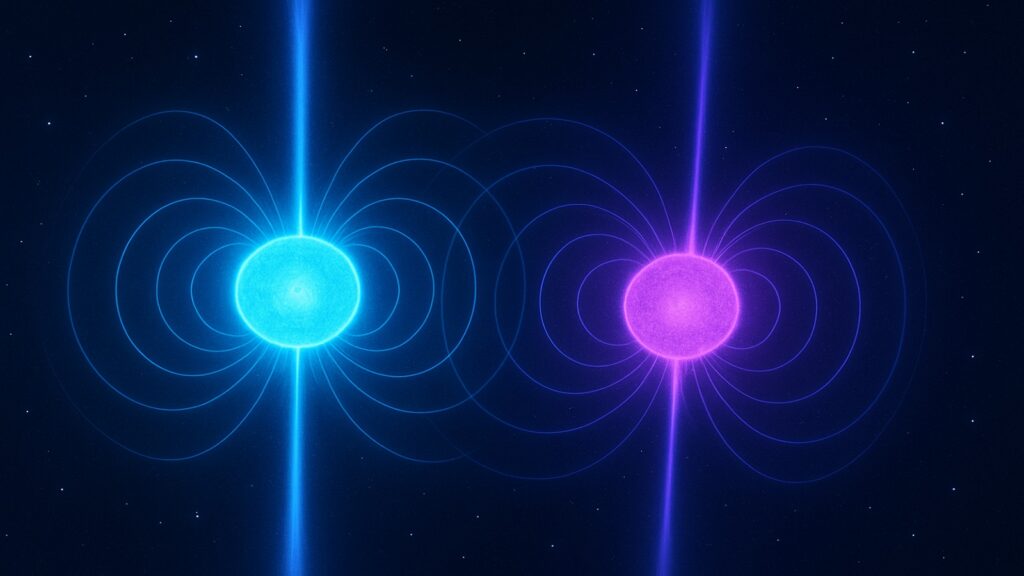
Millisecond pulsars have fundamentally transformed our understanding of the universe, serving as cosmic laboratories that probe the most extreme physics imaginable. From their role as precision clocks that rival atomic standards to their function as gravitational wave detectors spanning galactic distances, these stellar remnants continue to push the boundaries of human knowledge.
The journey from their discovery in 1982 to recent detections of gravitational wave backgrounds illustrates how millisecond pulsars consistently exceed scientific expectations. Each new discovery reveals unexpected aspects of neutron star physics, stellar evolution, and fundamental gravity that reshape theoretical frameworks and inspire new experimental approaches.
Looking ahead, the combination of more sensitive telescopes, sophisticated analysis techniques, and expanded pulsar populations promises discoveries that may rival the initial detection of pulsars themselves. The possibility of using millisecond pulsars for interstellar navigation, detecting primordial gravitational waves, or discovering exotic matter states maintains the position of the millisecond pulsars at the forefront of astrophysical research.
Perhaps most importantly, millisecond pulsars remind us that the universe contains phenomena far stranger and more precise than human imagination initially conceived. These spinning lighthouses, scattered throughout our galaxy like beacons in cosmic darkness, continue to guide astronomers toward deeper truths about space, time, and the fundamental nature of reality itself.
Table 8: Future Discoveries and Applications
| Research Area | Potential Breakthroughs | Scientific Impact | Timeline |
|---|---|---|---|
| Gravitational Waves | Individual SMBH mergers | Early universe physics | 2025-2030 |
| Neutron Star Physics | Exotic matter detection | Fundamental physics | 2025-2035 |
| Navigation Systems | Galactic GPS networks | Space exploration | 2030-2040 |
| Cosmology | Dark matter interactions | Universe evolution | 2025-2035 |
| Stellar Evolution | Population synthesis | Galactic archaeology | Ongoing |
The story of millisecond pulsars remains far from complete. As we stand on the threshold of discoveries that will further revolutionize astronomy, these cosmic clocks tick steadily onward, keeping time with the heartbeat of the universe itself.




